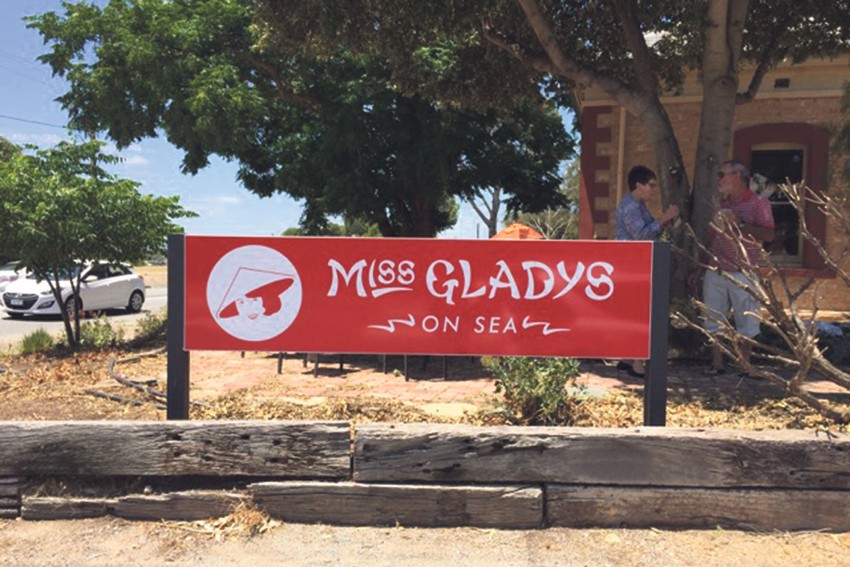Small Town Sexy

How small town South Australia is reinventing itself.
A farmer friend recently observed that the towns in his part of country South Australia seem to be slowly evolving from caring, closely-knit rural communities into a low-cost accommodation option for the dysfunctional, drug dependent and dispossessed. A weekend spent across the Victorian border presents an alternative scenario however. After decades of decline and decay, historic Port Fairy is now a thriving holiday and ‘sea-change’ destination bursting with renovated coffee shops, specialist retail outlets, restaurants, hotels, B&Bs and bars. The existing community and newly arrived entrepreneurs have built on the area’s charm and character to establish music and cultural festivals of national and international repute, well beyond the usual reach of such a modest population. Meanwhile the Gunditjmara people are working miracles to rehabilitate the nearby Budj Bim volcanic landscape, while gunning for UNESCO World Heritage listing. Having won native title, they are reviving a long-gone eeling industry by reinstating ancient stone fish-trap systems and diverting water back into dried-up lakes and wetlands. Cultural tourism infrastructure is being developed to support these endeavours. Pioneer of the Small Town Sexy movement, Kim Huston, is from Bardstown, Kentucky, “the most beautiful small town in America” according to a tourism industry ballot. On a recent a visit to Australia, Huston promoted the attractions of living in a small town: they have assets that cannot be duplicated in larger communities and these strengths can be highly sought-after by younger generations. “People come to small towns because they like the life there, but they want nice restaurants with ethnic foods and museums and regional airports,” says Huston. She also talks about the concept of regionalism, in which smaller towns benefit from their proximity to larger cities with more diverse cultural offerings. Access to technology is a game changer, enabling people to create enterprises away from the larger centres. Huston works with community leaders to find, identify and develop regional assets as well as market them to potential business investors. Participants in her workshops are invited to highlight towns that are successfully using their charm and heritage attributes to attract people looking for change. South Australians attending Huston’s Melbourne workshop pointed to Goolwa, Port Elliot, Willunga and historic Aldinga as places that are reinventing themselves through cultural and entrepreneurial innovation. The Willunga Farmers’ Market was described as “economic Viagra” when it rejuvenated the town 10 years ago. Like Port Fairy, historic buildings are now home to restaurants, retailers, B&Bs and trendy cellar door operations, while traditional butchers, bakers and candlestick-makers enjoy renewed interest. Early access to high-speed broadband has attracted innovative home-based online businesses not so visible to passers-by, which nevertheless provide patronage for the ever-evolving cultural, gastronomic and retail offering. Similarly, when the historic river port of Goolwa became accredited as the first Cittaslow, or Slow Town in Australia in 2007, it joined an international network of towns and cities where, according to the Cittaslow manifesto, “People are still curious about times past, towns rich in theatres, squares, cafes, workshops, restaurants and spiritual places, towns with untouched landscapes and fascinating craftsmen, where people are still aware of the slow passing of the seasons, marked by genuine products, respecting tastes, health and spontaneous customs.” The latest SA “sexy” kid on the block is undoubtedly Aldinga Historic Township, gateway to the summer playgrounds of Port Willunga and Aldinga Beach. More of a cross-roads settlement than an actual town, old Aldinga slumbered for years, its general store surviving on sales of cigarettes and over-priced toilet paper, and heritage buildings lurching from one unsuccessful enterprise to the next as punters chose to go elsewhere to spend their money. Change came just over three years ago, when Home Grain Bakery bought the old general store and converted it to a state-of-the-art bakery and coffee house. The ‘Coffee/Culture/Community’ philosophy of Home Grain’s owners was an overnight success, with locals and visitors queuing up daily for their coffee fix. Savouries, sweets and sourdough loaves baked from local ingredients are served on wide, sun-drenched verandahs overlooking the town’s main street. Last summer, the Aldinga crossroads saw an explosion of organic food outlets, pop-up shops, restaurants and reggae bars led by the opening of Miss Gladys on Sea in the state heritage-listed Temperance Hotel building on one corner. The confidence of the iconic Adelaide fashion retailer has in turn generated new waves of entrepreneurship, with weekly Fridays After Five night markets and an inaugural Fleurieu Film festival already on the cultural calendar for next summer.